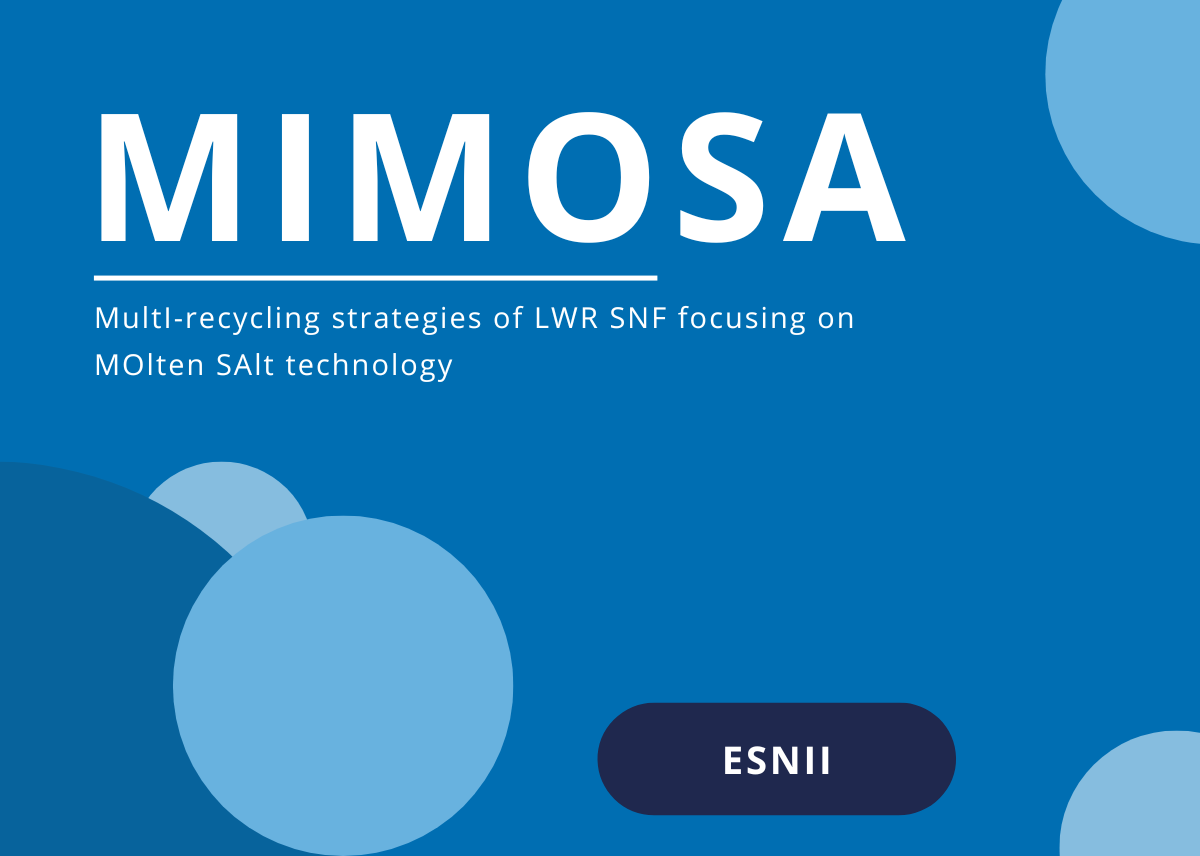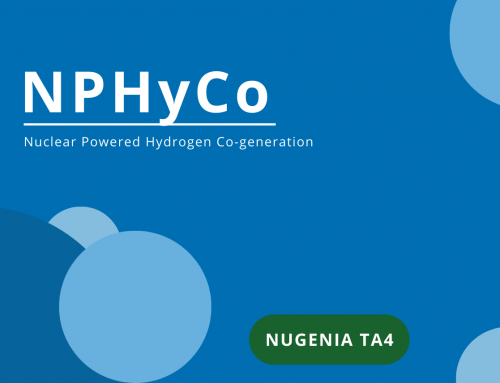
OBJECTIVES
Multi-recycling in LWRs is a tangible solution moving towards the closure of the fuel cycle, but it presents some limitations related to the degradation of the Pu isotopic composition and the generation of minor actinides (MA), leading to an increase of vitrified high-level waste when compared to multi-recycling with Fast Reactors (FRs).
Significant improvement in converting all the Pu isotopes and MA into Fission Products (FPs) with shorter half-lives can be achieved with the introduction of advanced FR systems, among which the molten salt reactor (MSR) using Chloride salt is a particularly promising option. There is no experience to this date with Chloride MSRs (Cl MSRs) in operation, but they have been studied and tested on experimental set-ups, showing a great improvement in the conversion rate of actinides.
For these reasons, MIMOSA aims to develop an accessible, cost/risk optimised multi-recycling strategy of LWR spent fuels in the EU, based primarily on multi-recycling of Pu (and Reprocessed U) in LWRs combined with the Cl MSR, using already available infrastructure in the EU such as the French reprocessing plant in La Hague.
This strategy will also be compared with other multi-recycling scenarios and alternative reprocessing options.

EXPECTED IMPACTS
MIMOSA focuses more specifically on the demonstration of several key aspects of technical feasibility and performance of Cl MSRs that will contribute to accelerating the deployment of this advanced technology, on Pu and MA conversion respectively, and on production of valuable isotopes for other applications.
- MSR safety assessment, in particular the qualification of innovative materials, new corrosion monitoring and mitigation methods, control of accidental situation…
- Development of synthesis routes of the chloride fuel salt for use at the industrial scale
- Selection and qualification of optimized fuel salt composition with respect to its thermo-physical properties
- Pyro-chemical processes to recycle Plutonium and minor actinides
- New methods for fission products (FP) management (removal of FPs, extraction and purification of the valuable FPs, disposal of FPs)
- Qualification of codes coupling neutronics and thermo-hydraulics

MAIN RESULTS/ HIGHLIGHTS
Globally, the MIMOSA project will raise the TRL of several Cl MSR related technologies, processes and materials from 1 or 2 (initial status) to 3 or 4 (final status), depending on topics.
The successful achievement of the MIMOSA objectives will contribute to the development of materials and technologies that can be useful not only for MSRs but also other high temperature, high corrosion applications such as the chemical industry, energy storage, and pave the way for Cl MSR deployment in Europe, which could be a game changer in nuclear energy, enabling the closure of the fuel cycle and significant beneficial impacts on the HLW storage footprint.c

PARTNERS
Orano (lead) / Centrum Vyzkumu Rez (CVR) / TU Delft / Thorizon / DFFR / CNRS / cInstitut Mines Télécom (IMT) / Institut Polytechnique de Grenoble (G-INP) / Nuclear-21 / ARTTIC / NRG / EDF / Schunk (associated partner) / and the JRC

DURATION
June 2022 – June 2026: 4 years

CONTACT
Project coordinator:
Isabelle Morlaes (Orano) Email: isabelle.morlaes@orano.group
Technical Project Leader:
Bertrand Morel (Orano) Email: bertrand.morel@orano.group

FOR DOWNLOAD

This project has received funding from the Euratom Horizon Europe programme for Research and Innovation (2021-2027) NRT01-03 under grant agreement No N°101061142.




